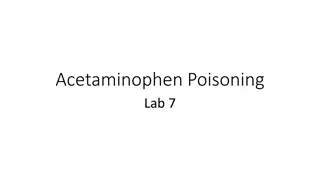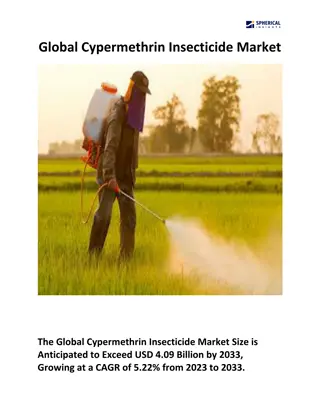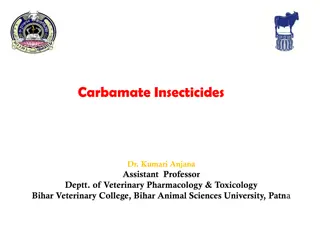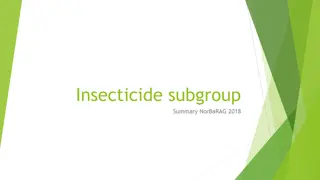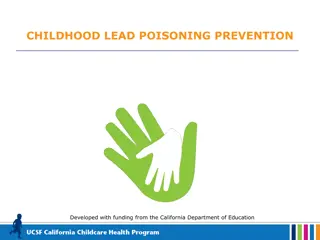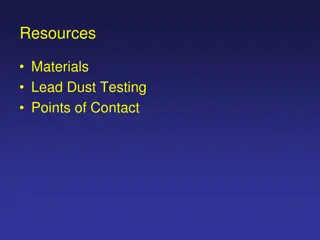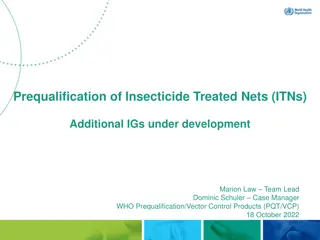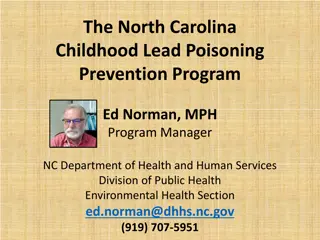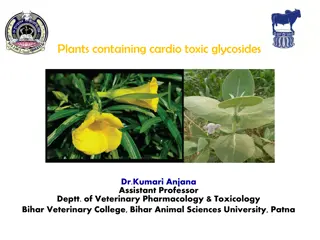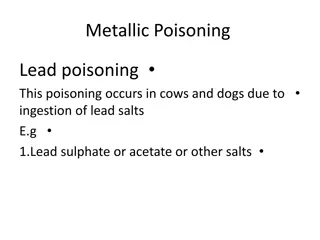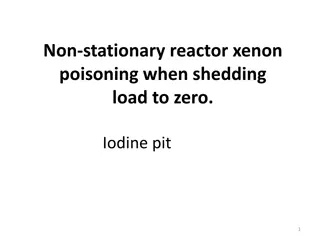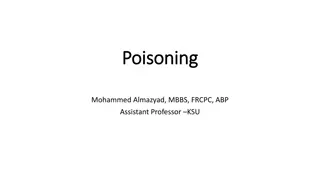
Insecticide Poisoning in Veterinary Pathology
Explore the toxicopathology of insecticide poisoning, covering the classification of insecticides, mechanisms of toxicity for different chemical types like organochlorines, organophosphorus, and carbamates, clinical symptoms, necropsy lesions, diagnostic methods, and more. Gain insights into the impact of insecticides on ecosystems and the potential risks to humans and animals.
Download Presentation

Please find below an Image/Link to download the presentation.
The content on the website is provided AS IS for your information and personal use only. It may not be sold, licensed, or shared on other websites without obtaining consent from the author. If you encounter any issues during the download, it is possible that the publisher has removed the file from their server.
You are allowed to download the files provided on this website for personal or commercial use, subject to the condition that they are used lawfully. All files are the property of their respective owners.
The content on the website is provided AS IS for your information and personal use only. It may not be sold, licensed, or shared on other websites without obtaining consent from the author.
E N D
Presentation Transcript
INSECTICIDE POISONING Course Title:Toxicopathology Course No.: VPP-609 Unit-II DR. KAUSHAL KUMAR Assistant Professor & Head Department of Veterinary Pathology Bihar Veterinary College, BASU
Introduction Insecticides are substances used to kill insects. They include ovicides and larvicides used against insect eggs and larvae, respectively. Insecticides are used in agriculture, Livestock farmer. Insecticides are claimed to be a major factor behind the increase in the 20th- century's agricultural productivity. Nearly all insecticides have the potential to significantly alter ecosystems; many are toxic to humans and/or animals; some become concentrated as they spread along the food chain.
Clinical Aspect of Insecticide poisoning on the basis of chemical nature, insecticides are classified as a) Organochlorine ex: DDT, Aldrin, Lindane. b) Organoposphorus ex: Parathion, sumithion, and malathion c) Carbamate ex: aldicarb and carbaryl d) Synthetic pyrethroid ex: cypermethrin Permethrin.
Organochlorines Insecticides Toxicity: Mech. Of toxicity: They are neuro-poisons. By virtue of their high lipid sohibility, they easily enter the neural membrane and interfere with sodium-pottasium Channel of membrane and some time (lindane) by inhibiting GABA-dependent Cl influx. Clinical symptoms: Dichloro-diphenylethane (DDT) poisoning causes initial stimulation of CNS followed by depression and death due to respiratory failure. In chromic poisoning, liver damage, hypoglysemia and hyperkalemia may be noted. Symptoms of aldrin poisoning is more server then DDT characterised by teeth grinding, dyponea and frequent urination etc. Necropsy Lesion: No specific lesion in the nervous system. However acute Aldrin poisoning may cause hepatitis and acute tubular nephrosis. In chromic case centrilobular necrosis may be noted. Diagnosis: 1)On the basis of history, sign and PM lesson 2)Analysis of feed and or blood/milk sample and morbid specimen. 3)Differential diagnosis from : salt, strychnine fluroacelate poisoning.
Organo Phorphorus Insecticides Toxicity: On the basis of their activities OPI are classified as a)Direct activity OPI ex: dichlorvos, TEPP, chlorothion anilophos. b)Indirect Acting OPI ex: Malathion, Parathion.
Carbamate Insecticides Toxicity: Mechanism of toxicity: Carbmates are potent and reversible inhibitors of cholinesterase enzyme whereas AChe inhibition by OPIs is irreversible. Clinical Sign: are similar to that of OPIs but poisoning by carbamates is less sever and effects do not last long. PM Lesion: Limited to congestion and edema of lung liver and kidney.
Synthetic Pyrethroids Insecticides Toxicity: ex: Cypermethrin and Permethrin *Mechanism of Toxicity: It is synthetic neuropoison and maintarget of actionis the nerve membrane sodium channel. *Clinical sign: of acute poisoning in lab animals are restlessness, incoordination, hyperactivity, tremor, prostration and paralysis and overall it is referred as T- syndrome. *Diagnosis on the basis of clinical signs. Almost identical symptoms seen in any organochlorin poisoning.
References: 1. https://www.msdvetmanual.com/toxicology/lead-poisoning/overview-of- Insceticides


